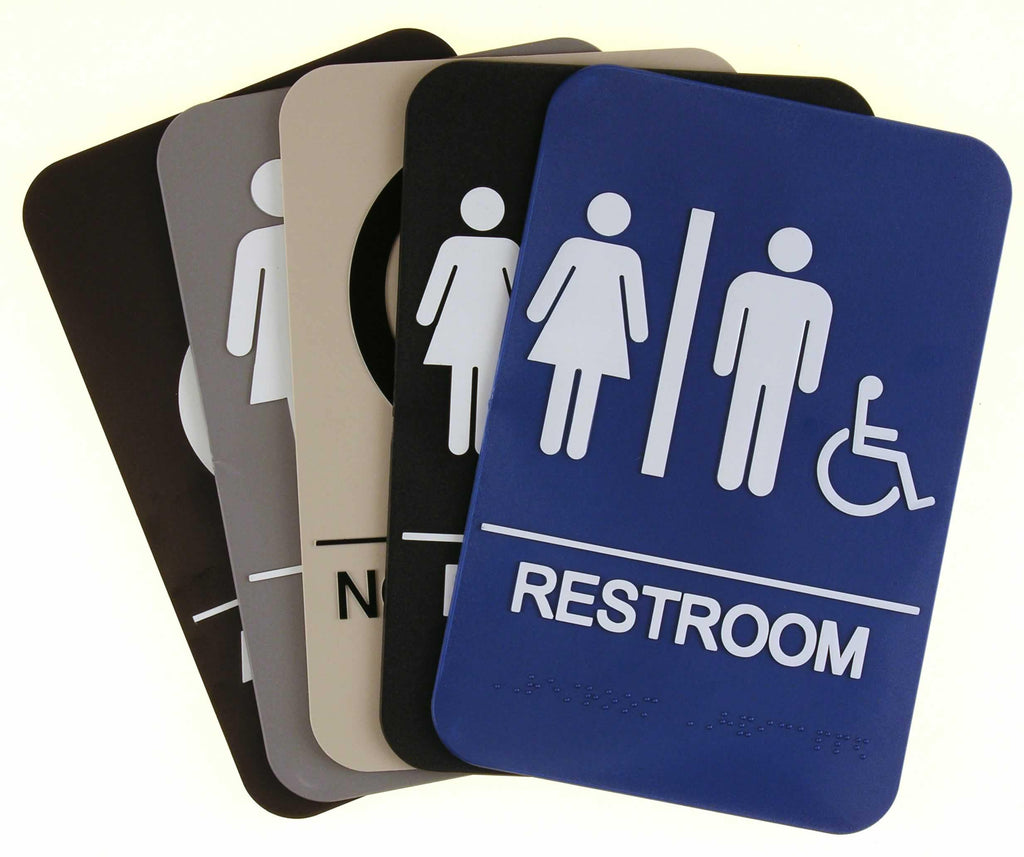Discover the Importance of ADA Signs in Public Spaces
Discover the Importance of ADA Signs in Public Spaces
Blog Article
Discovering the Secret Attributes of ADA Indications for Enhanced Availability
In the world of access, ADA indications offer as silent yet powerful allies, making sure that spaces are comprehensive and navigable for individuals with impairments. By integrating Braille and tactile elements, these indicators damage obstacles for the visually impaired, while high-contrast color plans and readable typefaces cater to varied aesthetic needs.
Importance of ADA Conformity
Ensuring conformity with the Americans with Disabilities Act (ADA) is critical for promoting inclusivity and equal accessibility in public spaces and offices. The ADA, enacted in 1990, mandates that all public centers, employers, and transportation solutions fit individuals with disabilities, guaranteeing they take pleasure in the exact same civil liberties and possibilities as others. Compliance with ADA standards not only meets legal responsibilities yet likewise boosts a company's online reputation by showing its commitment to variety and inclusivity.
One of the key aspects of ADA conformity is the execution of available signage. ADA signs are made to ensure that people with specials needs can conveniently navigate via structures and areas.
Additionally, sticking to ADA laws can alleviate the threat of legal effects and potential penalties. Organizations that fall short to abide by ADA guidelines may face fines or lawsuits, which can be both harmful and monetarily difficult to their public image. Therefore, ADA compliance is important to promoting a fair environment for everybody.
Braille and Tactile Components
The consolidation of Braille and tactile components into ADA signs symbolizes the concepts of availability and inclusivity. It is commonly placed below the corresponding message on signage to guarantee that individuals can access the info without visual support.
Responsive components prolong beyond Braille and include increased symbols and personalities. These parts are designed to be discernible by touch, permitting people to determine space numbers, washrooms, exits, and other vital areas. The ADA sets specific guidelines relating to the dimension, spacing, and placement of these responsive components to optimize readability and ensure consistency across various atmospheres.

High-Contrast Shade Systems
High-contrast color pattern play a critical role in enhancing the visibility and readability of ADA signs for people with aesthetic impairments. These systems are necessary as they take full advantage of the distinction in light reflectance between text and history, ensuring that signs are conveniently discernible, even from a range. The Americans with Disabilities Act (ADA) mandates using details color contrasts to suit those with restricted vision, making it a vital aspect of compliance.
The effectiveness of high-contrast colors depends on their ability to stand apart in numerous lights problems, including poorly lit environments and areas with glow. Usually, dark text on a light history or light message on a dark background is utilized to attain optimal comparison. Black text on a white or yellow background gives a raw aesthetic difference that aids in fast recognition and understanding.

Legible Fonts and Text Size
When thinking about the design of best site ADA signs, the option of clear typefaces and ideal message dimension can not be overstated. The Americans with Disabilities Act (ADA) mandates that font styles need to be not italic and sans-serif, oblique, manuscript, extremely ornamental, or of unusual kind.
The size of the text additionally plays a crucial duty in availability. According to ADA guidelines, the minimal message height should be 5/8 inch, and it needs to boost proportionally with seeing distance. This is especially vital in public areas where signage needs to be reviewed rapidly and accurately. Uniformity in message size adds to a cohesive aesthetic experience, helping individuals in browsing environments successfully.
Additionally, spacing in between letters and lines is indispensable to clarity. Adequate spacing prevents personalities from showing up crowded, enhancing readability. By sticking to these criteria, designers can dramatically enhance accessibility, making sure that signs serves its designated objective for all individuals, despite their aesthetic capacities.
Efficient Positioning Strategies
Strategic placement of ADA signage is vital for making best use of accessibility and ensuring conformity with lawful standards. ADA standards stipulate that indicators need to be installed at a height between 48 to 60 inches from the ground to guarantee best site they are within the line of sight for both standing and seated individuals.
In addition, indications must be put surrounding to the latch side of doors to enable easy identification before access. Consistency in sign positioning throughout a facility improves predictability, reducing complication and enhancing overall individual experience.

Conclusion
ADA signs play an essential duty in advertising ease of access by incorporating functions that deal with the needs of individuals with disabilities. These components collectively foster a comprehensive setting, highlighting the value of ADA compliance in ensuring equal access for all.
In the world of access, ADA indications serve as quiet yet effective allies, making sure that areas are comprehensive and navigable for individuals with impairments. The ADA, established in 1990, mandates that all public centers, companies, and transportation solutions fit individuals with disabilities, guaranteeing they take pleasure in the exact same rights and possibilities as others. ADA Signs. ADA indications are created to ensure that people with specials needs can easily browse through areas and buildings. ADA standards stipulate that indicators ought to be placed at an elevation between 48 to 60 inches from the ground to guarantee they are within the line of sight for both standing and seated people.ADA indicators play a crucial role in advertising ease of access by incorporating functions that resolve the requirements of people with impairments
Report this page